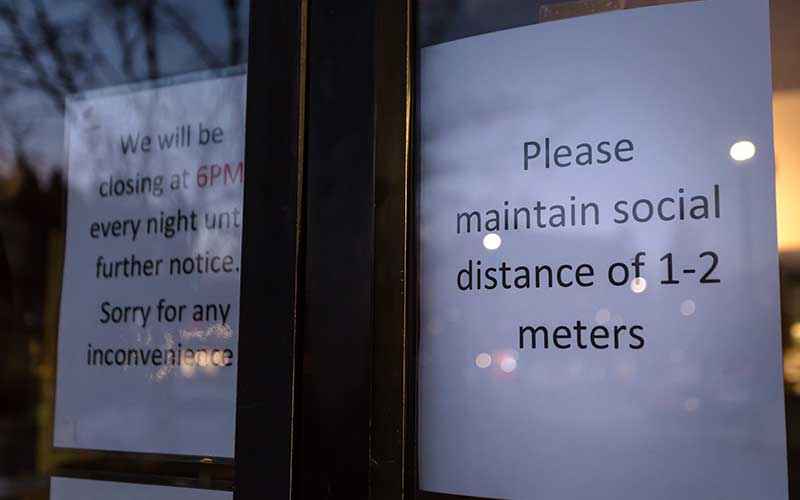Sourcing and Procurement
E-Invoicing finds due credit in the era of accelerated digital transformation
With the disruption caused by COVID-19, companies around the world grappled to find innovative ways to stay connected in an outside-of-office working environment, which laid a strong foundation to accelerate digital transformation.
The digital acceleration as seen in the last several months also encouraged companies to redefine the operating models. The old way of working and following procedures increasingly became ineffective, and sometimes simply impossible to execute in the New Normal.
One of the processes that were significantly impacted was payments. As operations moved to virtual formats, companies were encouraged to turn to automated payment processes and new digital payment solutions. Electronic invoicing or new Cloud-based invoicing, for instance, are considered effective in streamlining the process and fully support the digitalization and cost-reduction strategies implemented by companies after the outbreak of COVID-19.
Electronic invoicing or e-Invoicing is simply an exchange of the bills of transactions between the buyer and the supplier, in an electronic format. It eliminates manual handling of invoices for both the supplier and the buyer and facilitates digital record keeping.
E-invoicing is not a new concept by any means. The first e-invoice was generated about 30 years ago through the EDI-Electronic data interface and its usage has been growing ever since. The size of the market globally was estimated at $4.9 million in 2018 and is projected to reach about $20 million by 2026, as per a report by Zion Market Research.
With technological advancements, the might of electronic invoicing has also matured over time, which allows companies to make the payment process much more smooth and secure. At the same time, the solutions are becoming easier to implement and more effective, providing a broad range of benefits to companies, including cash flow improvement and cost reductions.
Advantages of adopting e-invoicing solution:
E-invoicing can help reduce costs and increase process efficiency.
Managing paper invoices is expensive and mainly a time-consuming task. According to Hackett Group’s benchmark, the average cost of processing a paper invoice manually is about $6.39. By implementing an automated invoicing solution, organizations can cut down this cost by nearly 70%, while lowering the processing costs to about $2 per invoice.
E-invoicing enables better cash flow management.
In the case of e-invoicing, there is no need to print, scan, and manually process invoices. Thus, companies that implemented the electronic solution noticed a significant reduction in the order-to-cash lifecycle, which further helped in arresting the number of overdue payments. This further has the potential to improve the dynamics of supplier relationships.
E-invoicing helps improve accuracy and process compliance
Due to automation, companies can reduce the number of errors, as the manual work is reduced to a minimum, and there are fewer errors in the process. Electronic invoicing also helps organizations to adapt to a diverse set of local regulations and data storage rules, which may vary from country to country.
Since e-invoicing is a fully paperless solution, it also goes a long way in supporting the sustainability targets of companies, contributing to a reduction in carbon footprint, use of raw materials, and transportation.
Likewise, Cloud-based invoicing solutions in the market also offer advanced functionalities for users, allowing companies to implement end-to-end self-serviced payments.
Cloud solutions are even more secure and provide the benefits of a safe backup for critical files and data. Such solutions also offer easy and round-the-clock access to stored documents from any location and any device, albeit with proper authorization. The main advantage of Cloud invoicing over standard e-invoicing solutions, however, is the ease of implementation it offers. It does not require complex information or investment and is also within reach of medium -and small-sized businesses in terms of cost.
The Government use case
Large enterprises are not the only ones enjoying the benefits of a digital solution. Electronic invoicing is showing potential in the government sector as well. Automating processes enables higher transparency and visibility of payments, which in turn allows better control and vigilance on possible frauds. Brazil, Chile, and Mexico, the pioneers in the adoption of e-Invoicing in Latin America (LATAM), made electronic invoicing obligatory for all B2B transactions way back in 2014 to improve tax compliance. Mexico alone improved tax revenues by about 34% after the move.
The success seen in LATAM encouraged European countries to follow suit. In 2014, the European Parliament and Council made it mandatory for all EU member countries to implement e-invoicing in public administration between 2018 and 2020. The European Commission calculated potential savings of nearly €2.3 billion with the adoption of e-invoicing.
Asia-Pacific is also now witnessing a surge in e-invoicing, with India and China processing 79.3% and 62.8% transactions, respectively, using e-invoicing. In India, e-invoicing is mandatory for businesses with a turnover of Rs500 crore or more. From April 2021, all B2B transactions are expected to come under the fold of e-invoicing.
While government policies acted as a catalyst for the adoption of e-invoicing in the above cases, private players nevertheless have been agile in integrating new technologies and solutions. Clients and partners are also demanding a higher degree of automation, which is spurring organizations to experiment and innovate. Automated and cloud-based e-invoicing solutions are thus a move towards the future of payments, keeping pace with the rapidly changing market dynamics. It’s the competitive edge of a New Normal.






